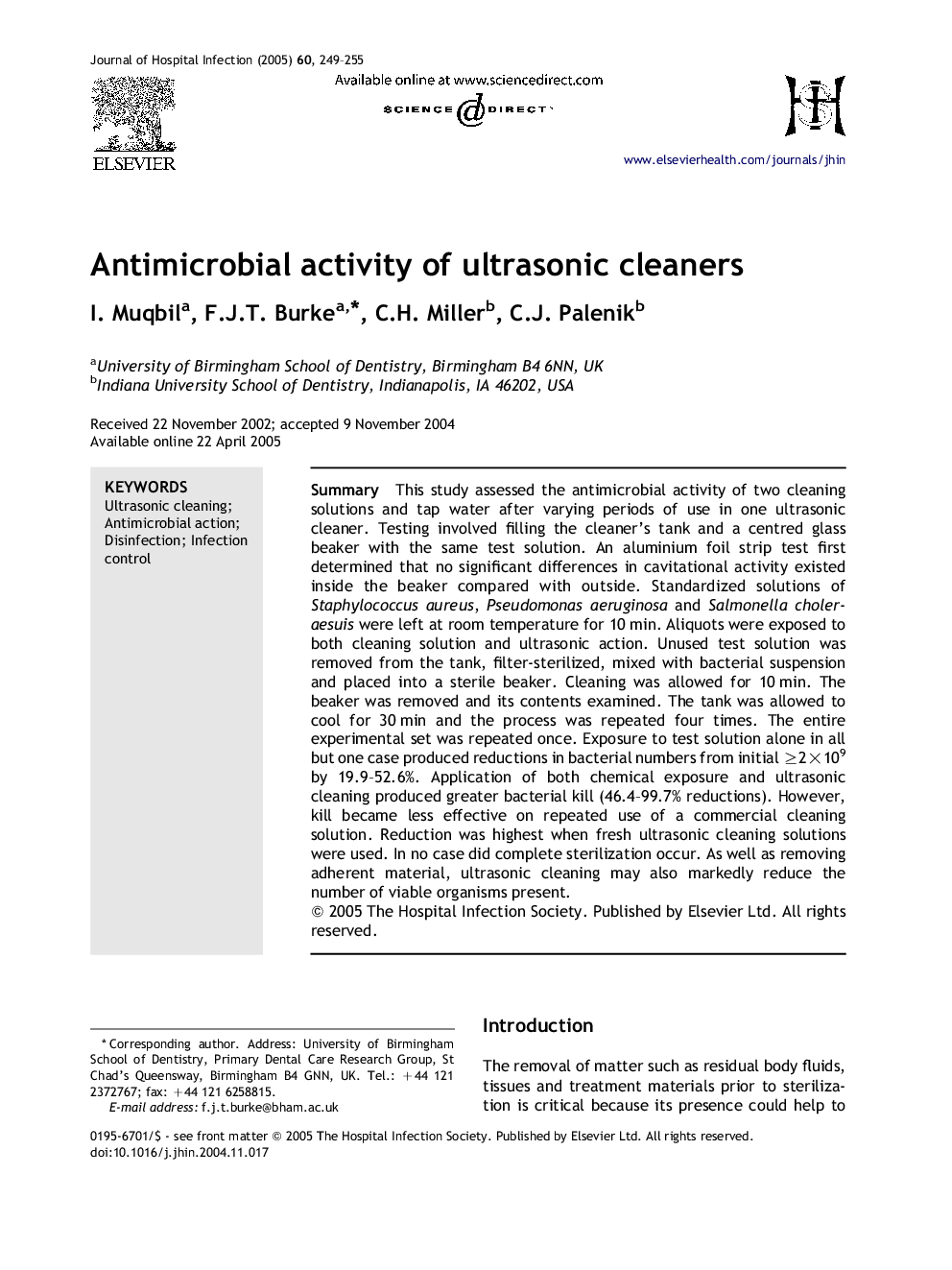| Article ID | Journal | Published Year | Pages | File Type |
|---|---|---|---|---|
| 9269304 | Journal of Hospital Infection | 2005 | 7 Pages |
Abstract
This study assessed the antimicrobial activity of two cleaning solutions and tap water after varying periods of use in one ultrasonic cleaner. Testing involved filling the cleaner's tank and a centred glass beaker with the same test solution. An aluminium foil strip test first determined that no significant differences in cavitational activity existed inside the beaker compared with outside. Standardized solutions of Staphylococcus aureus, Pseudomonas aeruginosa and Salmonella choleraesuis were left at room temperature for 10 min. Aliquots were exposed to both cleaning solution and ultrasonic action. Unused test solution was removed from the tank, filter-sterilized, mixed with bacterial suspension and placed into a sterile beaker. Cleaning was allowed for 10 min. The beaker was removed and its contents examined. The tank was allowed to cool for 30 min and the process was repeated four times. The entire experimental set was repeated once. Exposure to test solution alone in all but one case produced reductions in bacterial numbers from initial â¥2Ã109 by 19.9-52.6%. Application of both chemical exposure and ultrasonic cleaning produced greater bacterial kill (46.4-99.7% reductions). However, kill became less effective on repeated use of a commercial cleaning solution. Reduction was highest when fresh ultrasonic cleaning solutions were used. In no case did complete sterilization occur. As well as removing adherent material, ultrasonic cleaning may also markedly reduce the number of viable organisms present.
Related Topics
Life Sciences
Immunology and Microbiology
Applied Microbiology and Biotechnology
Authors
I. Muqbil, F.J.T. Burke, C.H. Miller, C.J. Palenik,
